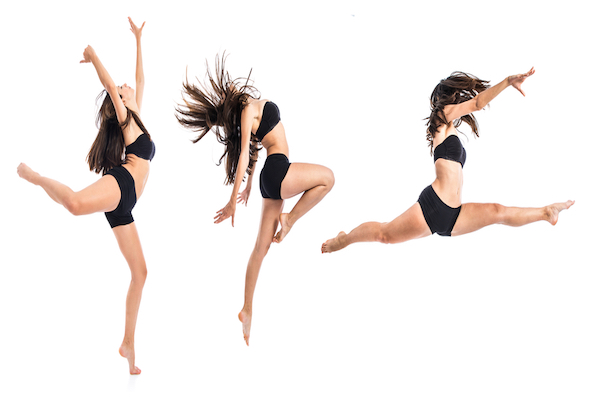Every dance association and society that issues professional qualifications requires candidates to enter and be successful in taking an assessment examination.
Below is a structure of an Associate Freestyle Dance examination. Requirements may differ slightly for different associations/societies, although the changes will be very minimal.
An examination should be enjoyable, even though you will experience a certain level of nerves.
When taking a dance examination, it is not enough to just quote the technique book word for word. You will need to show your understanding of the technique through your dance demonstrations, answers and presentation.
Section 1
Demonstration:
This section will be devoted to your demonstration to music, during which you must show accurate technique and your artistic abilities.
Section a: 32 bar repeatable exercise for warm up.
Section b: 16 bar routine intermediate level.
Section c: 16 bar routine showing candidate’s creative ability.
Section 2
Dance to set figures:
The examiner will select three figures for you to dance either as a routine or for you to construct a short amalgamation. The figures will be selected from the Associate syllabus and will be danced to the music of your choice. This will include starting a class to music.
You will be assessed on your timing, technique and correct use of hand and arm positions whilst counting to the music.
Section 3
Definitions:
- Freestyle Dance
- Posture
- Rhythm
- Time Signature
- Tempo
- Counting in Beats and Bars
- Poise
- Locomotive Action
- Non-Locomotive Action
- Pattern
- Routine and Directional Chart
- Accent
- Accented Movements
- Phrase
- Rhythmical Expression and Balance
- Technique
- Focus
- Conditioning
- Alignment
- Initiation
Section 4
Compulsory questions:
- The history and origins of Freestyle Dance
- Recent history of Freestyle Dance
- Define Freestyle Dance
- The Walks
- Safety aspects in relation to Freestyle Dance
Section 5
Simple anatomy: physiology and mechanics of the human body:
- Anatomy
- Physiology
- The Skeletal System
- The Muscular System
- The Nervous System
- Tendons
- Cartilage
- Synovial Fluid
- Joints and Movements
- Ligaments
Section 6
Exercises:
- Warming Up
- Cooling Down
- Breathing and Breathing Exercises
- Isolation Exercises: Shoulders and Arms – Wrists – Fingers – Elbows – Neck and Head – Hips – Knees – Ankles and Feet – Pelvis and Lower Back – Sides/Waist – Chest – Spine
- Simple and Advanced Combination Exercises
Section 7
Steps and Movements:
Step – Pressure Step – Walk (Compulsory) – Shoulder Walk – Run – Stride – Jump – Hop – Spin – Turn – Open Turn – Chasse – Plié – Demi Plié – Switch Turn – Whisk Turn – Cross Turn – Twist Turn – Flick – Kick – Kick/Flick Ball Change – Stamp – Scuff – Stomp – Brush – Lunge – Développé – Spiral – Tap – Spring – Cross Tap Kick – Pose Line – Tuck Jump* – Frog Jump* – Penché*
* Candidates are required to know and explain but not demonstrate.
Section 8
Head – Arms – Hand and body movements:
- All head positions
- All arm positions
- All hand positions and movements
All body movements:
- Contractions
- Relaxation
- Middle Body Movement
- Rib Cage Movements
- Shoulder Movements
- Body Bending
- Sway
- Bounce
- Shake
- Body Stretching
- Rhythmical Body Action
- Expansion
Section 9
Safe dance practice and legal requirements.
Section 10
Professional behaviour and social networking.
Section 11
Portfolio.
Section 12
Teaching ability:
- General
- Safety
- Classwork
- Solo Routines



No Comments